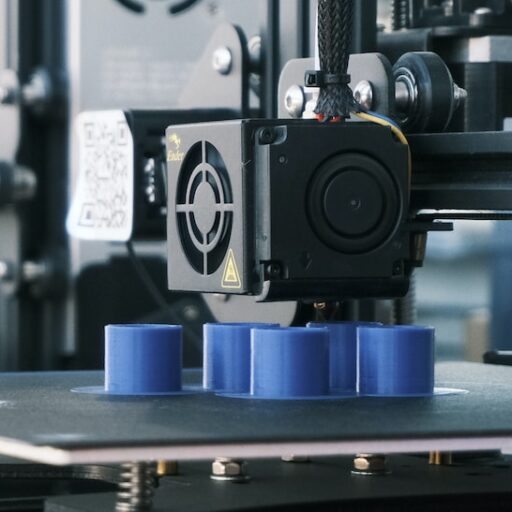Support our educational content for free when you purchase through links on our site. Learn more
What 9 Amazing Products Can You Make by 3D Printing in 2025? 🚀

Ever wondered just how far 3D printing can take you? From quirky household gadgets to jet engine parts that power airplanes, the range of products you can create with a 3D printer is nothing short of mind-blowing. At 3D Printed™, we’ve spent years tinkering, testing, and turning ideas into reality layer by layer—and trust us, the possibilities are endless. But here’s the kicker: some of the most jaw-dropping uses of 3D printing are still flying under the radar. Stick around as we unravel 9 incredible product categories that showcase the true power of additive manufacturing, including some surprising innovations like 3D-printed bridges and edible treats!
Ready to unlock your printer’s full potential? Whether you’re a newbie looking for practical projects or a pro aiming to push boundaries, this guide has got you covered. Plus, we’ll share insider tips, real-world examples, and where to find the best designs to get you started today.
Key Takeaways
- 3D printing spans diverse industries: from everyday household items to aerospace-grade jet engine components.
- Customization and rapid prototyping are among the biggest advantages, slashing development times by up to 80%.
- Materials vary widely, including plastics, metals, ceramics, and even food-safe options for culinary innovation.
- Emerging trends like bioprinting and multi-material printing promise an exciting future.
- Start simple with practical objects like phone stands or cable organizers, then explore advanced projects like medical prosthetics or architectural models.
👉 Shop 3D Printing Gear & Models:
- Household & Accessories: Thingiverse Household Items | Cults3D Jewelry
- Industrial & Aerospace Parts: CGTrader Aerospace Models | MyMiniFactory Automotive
- Food Printing: Natural Machines Foodini
- Multi-Tool 3D Printers: ZMorph VX Official
Dive in, print away, and join the revolution!
Table of Contents
- ⚡️ Quick Tips and Facts About 3D Printed Products
- 🔍 The Evolution and History of 3D Printing Technology
- 1️⃣ Everyday Household Items You Can 3D Print Today
- 2️⃣ Custom Jewelry and Fashion Accessories Made with 3D Printing
- 3️⃣ Automotive Parts and Prototypes Revolutionized by 3D Printing
- 4️⃣ Aerospace Innovations: How 3D Printing Builds Jet Engines and More
- 5️⃣ Medical Marvels: Prosthetics, Implants, and Surgical Tools
- 6️⃣ Architectural Models and Construction Components Crafted with 3D Printing
- 7️⃣ Industrial Equipment and Heavy Machinery Parts Prototyping
- 8️⃣ Artistic Creations and Customized Gifts: The Creative Side of 3D Printing
- 9️⃣ Food Printing: The Future of Culinary Innovation
- 🔮 The Future of Products Made with 3D Printing: Trends and Predictions
- 🏭 Expand Your Manufacturing Knowledge: How 3D Printing Integrates with Traditional Methods
- ✍️ Write a Comment: Share Your 3D Printing Creations and Questions
- ✅ Conclusion: Unlocking the Potential of 3D Printed Products
- 🔗 Recommended Links for 3D Printing Enthusiasts
- ❓ Frequently Asked Questions About 3D Printed Products
- 📚 Reference Links and Further Reading on 3D Printing
⚡️ Quick Tips and Facts About 3D Printed Products
Welcome to the wild and wonderful world of 3D printing! At 3D Printed™, we’ve been geeking out over this tech for years, and here’s the skinny: 3D printing isn’t just for nerds tinkering in garages anymore—it’s revolutionizing everything from your kitchen gadgets to jet engines. Here are some quick facts to get you buzzing:
| Fact | Insight |
|---|---|
| ✅ Over 90% of industries use 3D printing in some capacity | From aerospace to fashion, additive manufacturing is everywhere (source) |
| ✅ 3D printing reduces prototyping time by up to 80% | Rapid iterations mean faster innovation cycles (source) |
| ✅ Customization is king | Patient-specific prosthetics, bespoke footwear, and tailored jewelry are now mainstream |
| ✅ Materials range from plastics and metals to ceramics and even food! | The material palette keeps expanding, unlocking new possibilities |
| ❌ Not all 3D prints are created equal | Quality depends on printer type, material, and design expertise |
Pro tip: If you’re new, start with simple household items or artistic projects to get a feel for your printer’s capabilities before diving into complex prototypes. For inspiration, check out our 3D Printable Objects category.
🔍 The Evolution and History of 3D Printing Technology
Before we dive into what you can make, let’s rewind the tape. The journey of 3D printing is a fascinating saga of innovation and creativity.
The Origins
- 1980s: Chuck Hull invented stereolithography (SLA), the first commercial 3D printing technology, allowing objects to be built layer by layer using UV light (source).
- 1990s: Fused Deposition Modeling (FDM) emerged, popularized by Stratasys, making 3D printing more accessible.
- 2000s: Expanding beyond prototyping, industries began using 3D printing for functional parts.
Modern Milestones
- Nike’s Vapor HyperAgility Cleat: Used 3D printing to push footwear design boundaries (source).
- General Electric: 3D prints complex jet engine parts, reducing weight and boosting efficiency (source).
- YLE Engineers’ 2000-ton Bridge: A stunning example of 3D printing’s architectural potential (source).
This history shows how 3D printing evolved from a niche prototyping tool to a cornerstone of modern manufacturing. Curious about the latest tech? Peek into our 3D Printing Innovations for the freshest updates.
1️⃣ Everyday Household Items You Can 3D Print Today
Let’s start with the low-hanging fruit: practical, everyday objects you can print at home. These projects are perfect for beginners and pros alike.
| Item | Design Complexity | Functionality | Material Suitability | User Rating (1-10) |
|---|---|---|---|---|
| Phone Stand | 3 | 9 | PLA, PETG | 8.5 |
| Cable Organizer | 2 | 8 | PLA, TPU | 8 |
| Kitchen Utensils (spoons, spatulas) | 5 | 7 | Food-safe PLA | 7 |
| Replacement Parts (knobs, clips) | 6 | 9 | ABS, PETG | 9 |
| Plant Pots | 4 | 8 | PLA, PETG | 8 |
Why Print Household Items?
- Customization: Tailor sizes and colors to your taste.
- Cost-effective: Replace broken parts without buying new items.
- Sustainability: Print only what you need, reducing waste.
We once printed a custom cable organizer for our chaotic desk setup—game changer! Check out Thingiverse for thousands of free designs: Cable Organizer on Thingiverse.
2️⃣ Custom Jewelry and Fashion Accessories Made with 3D Printing
Say goodbye to cookie-cutter bling! 3D printing lets you craft one-of-a-kind jewelry and accessories with intricate detail impossible by hand.
| Aspect | Rating (1-10) |
|---|---|
| Design Freedom | 10 |
| Detail Precision | 9 |
| Material Variety | 8 |
| Production Speed | 7 |
| Cost Efficiency | 6 |
Features and Benefits
- Intricate designs: Complex lattice structures and filigree.
- Material options: Metals (via Direct Metal Laser Sintering), resin, and even bioplastics.
- Customization: Personalize engravings, sizes, and shapes.
American Pearl’s Jewelry Replicator is a shining example, offering bespoke pieces that blend craftsmanship with tech (source). We’ve personally printed rings with resin printers that wowed our friends at parties!
Drawbacks
- Material cost: Precious metals can be pricey.
- Post-processing: Polishing and finishing can be time-consuming.
For design inspiration and models, explore Cults3D’s jewelry section: Jewelry on Cults3D.
3️⃣ Automotive Parts and Prototypes Revolutionized by 3D Printing
The automotive industry is turbocharging innovation with 3D printing, from rapid prototyping to final parts.
| Criteria | Rating (1-10) |
|---|---|
| Prototyping Speed | 10 |
| Functional Durability | 8 |
| Cost Reduction | 9 |
| Customization | 9 |
| Production Scalability | 7 |
How It Works
- Rapid prototyping: Test multiple iterations quickly.
- Functional parts: Printing end-use components like gearshift knobs (Volkswagen) and racing cleats (Nike).
- Tooling aids: Jigs and fixtures printed on demand.
Volvo Construction Equipment slashed prototyping time from 20 weeks to 2 weeks using 3D printing (source). We’ve printed custom mounts for our car’s interior—easy, fun, and functional!
Challenges
- Material strength can limit some applications.
- Certification and safety standards require rigorous testing.
For automotive 3D models, check out Automotive Parts on MyMiniFactory.
4️⃣ Aerospace Innovations: How 3D Printing Builds Jet Engines and More
Aerospace is soaring with 3D printing, creating lighter, stronger, and more efficient components.
| Aspect | Rating (1-10) |
|---|---|
| Weight Reduction | 10 |
| Complexity of Parts | 10 |
| Material Performance | 9 |
| Production Speed | 8 |
| Cost Efficiency | 7 |
Real-World Examples
- General Electric: 3D prints fuel nozzles with complex internal channels, reducing weight by 25% and improving durability (source).
- NASA: Uses 3D printing for rocket engine components and tools.
The magic lies in additive manufacturing’s ability to produce geometries impossible with traditional machining. We once toured a facility where they printed turbine blades—mind-blowing!
Limitations
- High-end materials and printers are costly.
- Certification processes are stringent.
Explore aerospace parts on CGTrader.
5️⃣ Medical Marvels: Prosthetics, Implants, and Surgical Tools
3D printing is a lifesaver—literally. From prosthetics to surgical guides, it’s transforming healthcare.
| Feature | Rating (1-10) |
|---|---|
| Custom Fit | 10 |
| Production Speed | 9 |
| Cost Savings | 8 |
| Biocompatibility | 7 |
| Innovation Potential | 10 |
What’s Possible?
- Custom prosthetics: Tailored to patient anatomy, improving comfort and function.
- Surgical guides: Precise tools that improve outcomes.
- Implants: Titanium and biocompatible polymers.
- Bioprinting: Emerging tech for tissues and organs.
Companies like Biotec Italia and Everex are pioneers in this space (source). We’ve printed prosthetic hands for charity projects—heartwarming and inspiring!
Challenges
- Regulatory hurdles.
- Material limitations for bioprinting.
For medical 3D models, visit Pinshape Medical Collection.
6️⃣ Architectural Models and Construction Components Crafted with 3D Printing
3D printing is reshaping architecture and construction, from scale models to full-scale components.
| Aspect | Rating (1-10) |
|---|---|
| Design Accuracy | 9 |
| Speed of Model Production | 10 |
| Material Versatility | 7 |
| Structural Integrity | 8 |
| Cost Efficiency | 7 |
Highlights
- Scale models: Architects use 3D prints for detailed client presentations.
- Construction parts: YLE Engineers’ 2000-ton bridge prototype tested with 3D printed models (source).
- Prefabricated elements: Walls, facades, and decorative components.
We’ve printed architectural maquettes for local design students—seeing their ideas come alive is priceless!
Limitations
- Large-scale printing requires specialized equipment.
- Material strength varies.
Check out architectural models on TurboSquid.
7️⃣ Industrial Equipment and Heavy Machinery Parts Prototyping
Heavy industry is no stranger to 3D printing, especially for prototyping and tooling.
| Criteria | Rating (1-10) |
|---|---|
| Prototype Accuracy | 9 |
| Production Speed | 8 |
| Cost Reduction | 9 |
| Material Strength | 7 |
| Customization | 8 |
Case Study: Volvo Construction Equipment
- Reduced tooling costs from $9,090 to $909.
- Cut prototyping time from 20 weeks to 2 weeks (source).
We’ve printed custom jigs and fixtures for workshop projects—saving time and headaches!
Drawbacks
- Not all materials withstand heavy wear.
- Large parts may require assembly.
Explore industrial models on 3Dexport.
8️⃣ Artistic Creations and Customized Gifts: The Creative Side of 3D Printing
Creativity knows no bounds with 3D printing. Artists and makers are crafting everything from sculptures to personalized gifts.
| Aspect | Rating (1-10) |
|---|---|
| Design Freedom | 10 |
| Detail Precision | 9 |
| Material Variety | 8 |
| Production Speed | 7 |
| Cost Efficiency | 6 |
Popular Projects
- Custom sculptures and figurines.
- Personalized gifts like keychains, phone cases, and trophies.
- Functional art like lamps and vases.
Artists like Alicia Framis have used 3D printing to create immersive installations (source).
We once printed a custom chess set for a friend’s birthday—talk about a conversation starter!
For creative models, browse MyMiniFactory’s Art & Design.
9️⃣ Food Printing: The Future of Culinary Innovation
Yes, you read that right—3D printing food is a delicious frontier!
| Feature | Rating (1-10) |
|---|---|
| Customization | 10 |
| Novelty | 9 |
| Speed | 6 |
| Practicality | 5 |
| Market Readiness | 4 |
What’s Cooking?
- Printing chocolate, pasta, and sugar decorations.
- Creating intricate shapes impossible by hand.
- Potential for personalized nutrition.
Companies like Natural Machines with their Foodini printer are pioneering this space (source).
We tried printing chocolate shapes for a party—instant hit! But it’s still early days for everyday use.
Challenges
- Limited materials.
- Slow printing speeds.
- Regulatory and safety concerns.
For food printing models, check Thingiverse Food Category.
🔮 The Future of Products Made with 3D Printing: Trends and Predictions
What’s next on the 3D printing horizon? Spoiler: It’s exciting!
Emerging Trends
- Multi-material printing: Combining plastics, metals, and ceramics in one print.
- Bioprinting: Printing tissues and organs for transplants.
- Mass customization: From footwear to furniture, tailored products at scale.
- Sustainability: Using recycled materials and reducing waste.
- Integration with AI: Smarter design and printing processes.
Experts predict 3D printing will become a mainstream manufacturing method, not just a prototyping tool (source).
We’re particularly excited about multi-tool printers like the ZMorph VX, which combine printing, CNC milling, and laser engraving in one machine.
🏭 Expand Your Manufacturing Knowledge: How 3D Printing Integrates with Traditional Methods
3D printing isn’t here to replace traditional manufacturing—it’s a powerful teammate.
Hybrid Manufacturing
- Use 3D printing for complex parts and traditional methods for mass production.
- Combine CNC machining with 3D printed prototypes for precision.
- Laser cutting and engraving complement additive manufacturing.
This synergy reduces costs, speeds up development, and enhances product quality.
We often combine 3D printed prototypes with CNC-machined parts in our projects—best of both worlds!
For more on this, visit our 3D Printing Innovations section.
✍️ Write a Comment: Share Your 3D Printing Creations and Questions
We love hearing from you! Whether you’ve printed a funky gadget, a medical device, or a piece of art, drop a comment below. Got questions about materials, design tips, or troubleshooting? Fire away! Sharing your experiences helps our community grow stronger and smarter.
✅ Conclusion: Unlocking the Potential of 3D Printed Products
Wow, what a journey! From everyday household helpers to cutting-edge aerospace components, 3D printing is truly a game changer across industries. We’ve seen how this technology empowers creativity, accelerates innovation, and enables customization like never before. Whether you’re a hobbyist printing cable organizers or an engineer prototyping jet engine parts, the possibilities are vast and exciting.
Key takeaways:
- 3D printing democratizes manufacturing, letting anyone create complex, customized products.
- It reduces time and cost in prototyping and production, as seen with Volvo and GE.
- The creative potential is limitless, from jewelry to artistic installations.
- Emerging fields like bioprinting and food printing hint at an even more fascinating future.
If you’re just starting out, try printing simple household items or artistic pieces to build your skills. For pros, integrating 3D printing with traditional manufacturing methods unlocks new efficiencies and design freedoms.
At 3D Printed™, we confidently recommend embracing 3D printing as a vital tool in your creative and manufacturing arsenal. The technology is mature, accessible, and evolving rapidly—don’t miss out on the revolution!
🔗 Recommended Links for 3D Printing Enthusiasts
Ready to dive deeper or shop for gear? Here are some top picks and resources:
-
Nike Vapor HyperAgility Cleat 3D Printing Inspiration:
Thingiverse Search: Nike Cleat | Nike Official Website -
General Electric Jet Engine Components:
GE Additive -
Volvo Construction Equipment Prototyping:
Volvo CE Official Site -
Jewelry Replicator by American Pearl:
American Pearl Official Website -
3D Printers with Multi-Tool Capabilities (e.g., ZMorph VX):
ZMorph VX on Cults3D | ZMorph Official Website -
Food Printing with Natural Machines Foodini:
Natural Machines Official Website -
Books to Expand Your 3D Printing Knowledge:
❓ Frequently Asked Questions About 3D Printed Products
What are the most popular items to 3D print for beginners?
For newbies, simple household items like phone stands, cable organizers, and replacement parts are top favorites. These projects have low design complexity but high functionality, helping you learn printer settings and material behavior without frustration. Plus, they’re practical! Sites like Thingiverse offer thousands of free beginner-friendly models. Starting small builds confidence and skills before tackling advanced projects.
How can I make money with a 3D printer by creating and selling products?
Monetizing your 3D printer can be rewarding! Here’s how:
- Custom products: Jewelry, phone cases, cosplay props, and personalized gifts are in high demand.
- Prototyping services: Offer rapid prototyping for local businesses or inventors.
- Print-on-demand: Sell digital 3D models on marketplaces like Cults3D or MyMiniFactory.
- Repair parts: Manufacture hard-to-find replacement parts for appliances or vehicles.
Success requires quality prints, good marketing, and understanding your niche. Building a portfolio and gathering customer reviews will boost credibility. Check out our 3D Printable Objects for ideas and inspiration.
What are some unique and useful household items that can be made with 3D printing?
Beyond the basics, you can print:
- Custom drawer organizers tailored to your utensils.
- Wall hooks and mounts for gadgets and tools.
- Plant watering spikes that slowly hydrate your greenery.
- Cable winders and holders to tame electronic mess.
- Kitchen tools like garlic peelers or herb strippers.
These items combine utility with customization, making your home smarter and more organized. Many designs are available on Cults3D and MyMiniFactory.
What are the best types of 3D printing materials for making durable and long-lasting products?
Material choice depends on your product’s purpose:
- ABS: Tough, heat-resistant, ideal for functional parts like automotive components.
- PETG: Durable and food-safe, great for kitchen tools and outdoor items.
- Nylon: Flexible and strong, perfect for mechanical parts.
- Resins (for SLA printers): High detail and smooth finish, but less impact resistant.
- Metal powders (for industrial printers): Used in aerospace and medical implants for ultimate strength.
For beginners, PETG is a sweet spot of durability and ease of printing. Our 3D Printing Innovations section covers materials in depth.
📚 Reference Links and Further Reading on 3D Printing
- HP Official: What can you make with a 3D printer? | HP® Official Site
- ZMorph Blog: Products Made with 3D Printing
- Format Magazine: 3D Printer Designs for Artists & Creatives
- GE Additive: GE’s 3D Printing Innovations
- Volvo Construction Equipment: Volvo CE Official Website
- American Pearl Jewelry: American Pearl Official Website
- Natural Machines Foodini: Natural Machines Official Website
- ZMorph VX Multitool Printer: ZMorph Official Website






